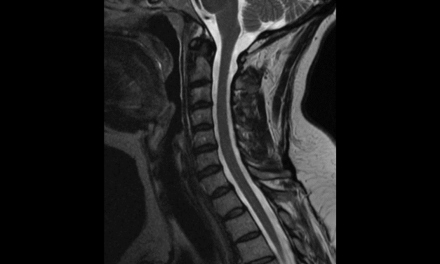
Results of an Audit: a Case Study

Some time ago I worked with a client who needed help with an appeal. The provider had seen a patient over the course of four weeks for severe low back pain with radiculopathy to the left calf and foot. The provider put together a care plan and outlined goals based upon functional deficiencies. At each encounter, the following codes, among others, were billed:97110 Therapeutic exercises, 97140 Manual therapy. The therapy services were denied for most of the visits. The claims reviewer provided the following partial explanation for the denial:
“The information provided does not establish medical necessity for the services provided. Therapy is goal-oriented and is evaluated on the basis of goal achievement, including quantifiable rates of improvement in functional abilities and documented treatment outcomes…”
The keywords I gathered from this statement include “goal-oriented”, “improvement”, “function”, and “outcomes”. It seems that these are the focus of many denials or refund requests these days. When helping the client, my job was to try to find these things documented in the record and argue that the criteria for medical necessity had been met.
The documentation, in this case, was better than average, and it was easy to read because of its electronic format. The software created a pretty complete note, so I felt like I had the whole story. It followed a logical sequence with information clearly identified in the SOAP note format. In addition, the provider outlined a clear plan of care and created some specific goals. As a result, I identified findings that supported the provider’s view. However, I also found some things that supported the claims reviewer’s perspective.
Findings that Favored the Provider
The record clearly identified a functional deficiency, which was paramount for the claims reviewer. The history stated that the patient was unable to sit for more than 30 minutes without pain and that they could not stand from a sitting position without pain. The plan outlined time-based goals around these issues. Around the fifth visit, the provider stated that the patient could now sit 45 minutes without pain and that she could rise from a sitting position without pain. This is excellent evidence of functional progress. It showed that the goals were at least partially achieved as required by the claims reviewer. The provider also mentioned some physical changes, namely, fewer trigger points.
These documented findings clearly challenge the statements made by the claims reviewer. They appear to establish that the care was medically necessary and it showed functional progress. However, there are other factors to consider when evaluating functional progress.
Findings that Favored the Claims Reviewer
The patient initially rated her pain at 9/10, and after four weeks of care, she rated it at 7/10. This suggests some progress, but not as much as was expected per the goals established in the care plan. This issue may not be enough to claim that the care was not medically necessary, but the provider should have acknowledged it and provided an explanation, or adjusted the care plan.
Outcome assessment tools are an excellent way to show functional gains. The Oswestry, a common low back assessment tool, was used and scored. The initial score was 23, which decreased to 19 after four weeks of care (a patient with no problems would score 0). This represented a 17% improvement, but typically a minimum of 30% improvement is expected over four weeks. Unfortunately, there were no goals in the care plan that mentioned this score. The record would have been stronger if the provider had included a reasonable goal for the Oswestry score. If the goal was not met, then an explanation should have been provided. For example, perhaps there were complicating factors or comorbidities. The thing that would have helped this case the most would have been for the provider to assess and document progress relative to previous goals, then adjust the plan accordingly.
Other Concerns
The diagnoses selected for this case were the typical M99.0- Segmental and somatic dysfunction and the accompanying pain codes. While the patient certainly had these issues, the codes did not reflect the information documented. The provider clearly stated that there was radicular pain, but M54.16 lumbar radiculopathy was not included. This code would have better supported ongoing treatment. The provider also performed a myofascial release, but the subluxation and pain diagnosis codes don’t support the performance of that service as well as M79.1 Myalgia, myofascial pain syndrome.
Unfortunately, I don’t know if the provider won the appeal or not. I gave this case a 75% chance of resolving in favor of the provider. However, the claims might never have been denied in the first place if the provider had taken a little more time to clearly show functional progress. Setting measurable goals and assessing patient progress is key to successful reimbursement in today’s healthcare business environment.
At the Illinois Chiropractic Society training on June 28, I will talk more about these kinds of problems and provide easy to implement solutions (which you can also find in chapter 4 of the 2017 ChiroCode DeskBook.) Documentation is more critical than ever when it comes to reimbursement and fighting audits. Join me as we look at the top codes used by chiropractors and come up with strategies to enable you to practice the way you want and still get paid for the work that you do.
About the Author
Dr. Gwilliam, Executive Vice President of ChiroCode Inc. and Find-A-Code LLC, graduated from Palmer College of Chiropractic as Valedictorian and is a Certified Professional Coding and ICD-10 Instructor, Medical Compliance Specialist, and Certified Professional Medical Auditor, among other things. He provides expert witness testimony, medical record audits, consulting, and online courses for health care providers. He also writes books and articles for trade journals and is a sought-after seminar speaker. He has a Bachelor’s degree in Accounting, a Master’s of Business Administration, and is one of the few clinicians who is a Certified MIPS/MACRA Healthcare Professional.
Editor’s Note: Dr. Evan Gwilliam will be teaching for the ICS on June 29th in Oak Brook, IL and at the 2017 CNC & Expo on October 6th in Naperville. For more information and to register visit www.illinoiscme.com

















